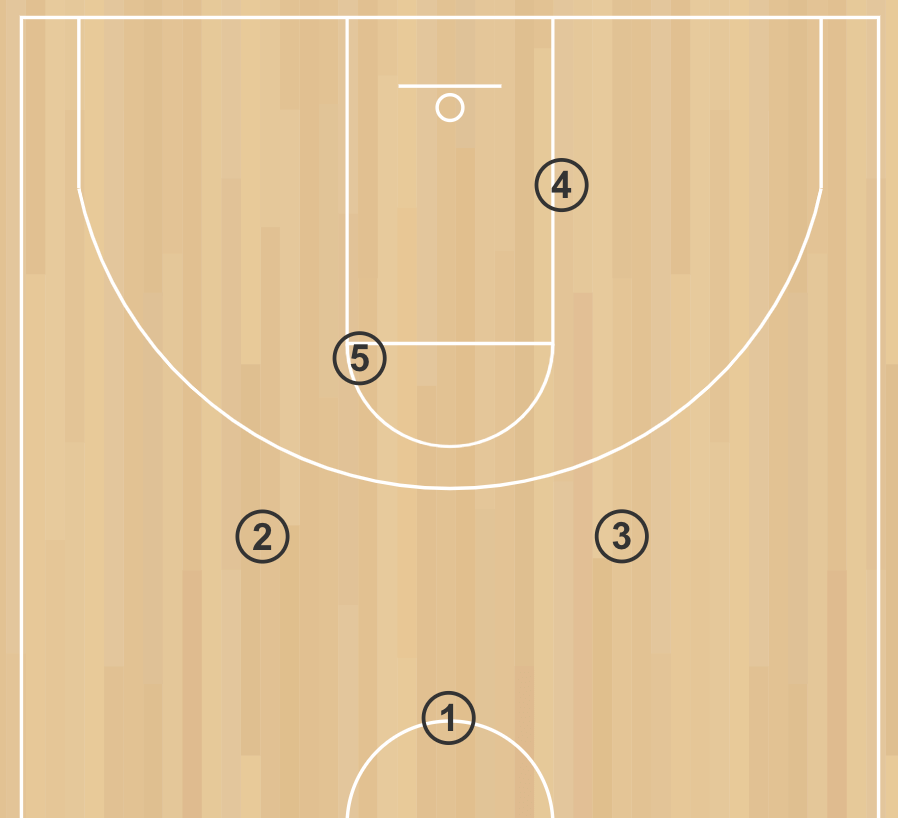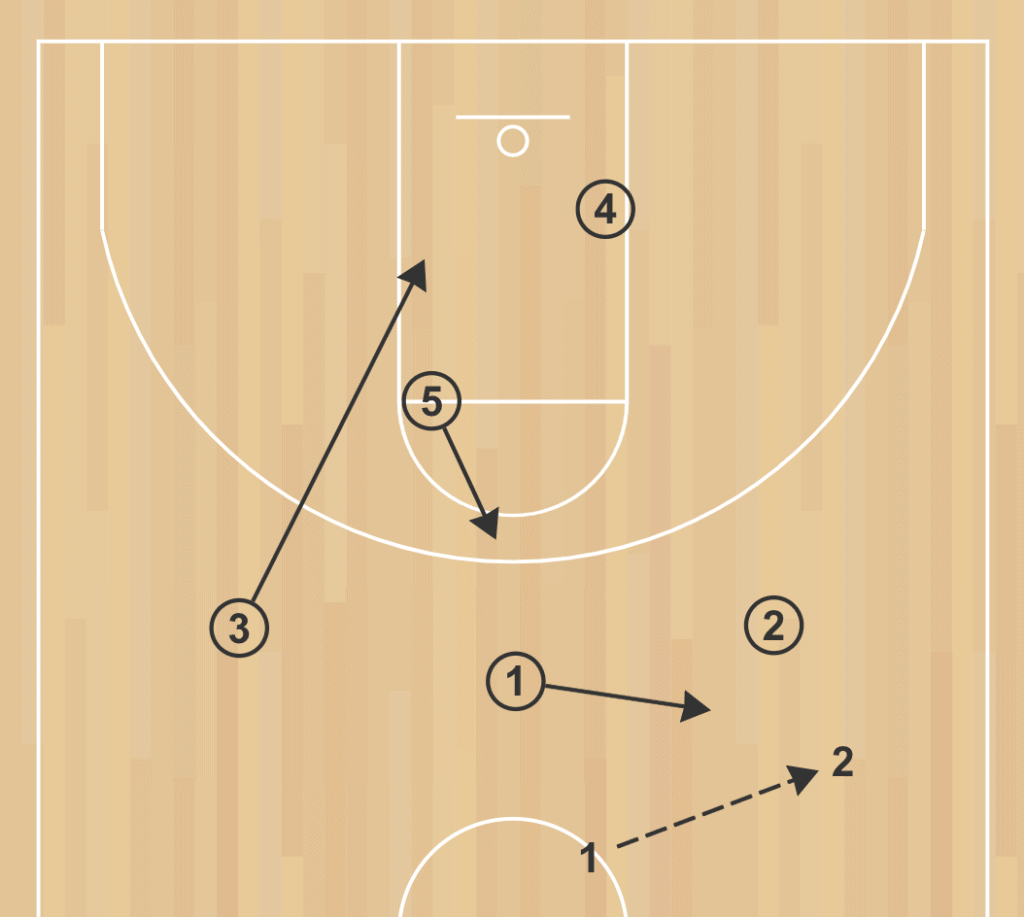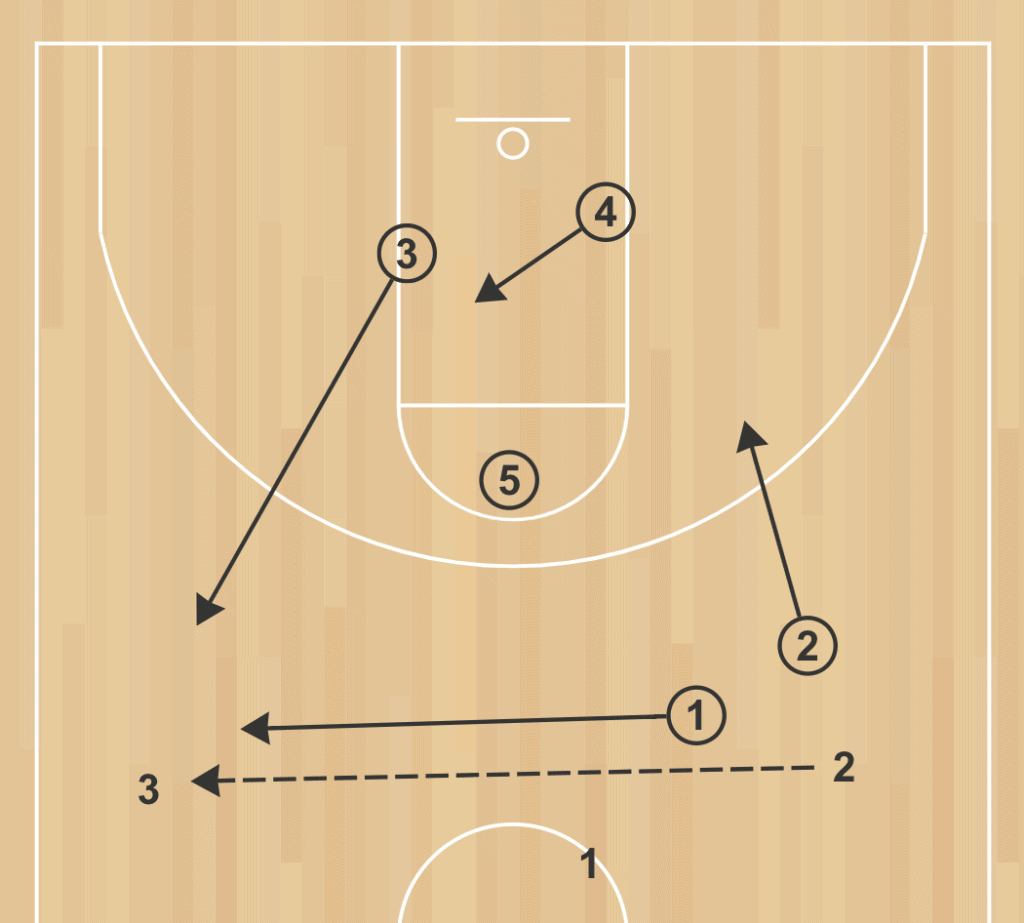The 3-2 half court press is kinda fringe. It involves the use of a 3-2 zone, which is one of the oldest and most widely used defensive formations in the sport, but it pushes the zone up a little and executes with a trapping mindset. The value of the 3-2 press, as I see it, is that it can be a little surprising and unexpected.
this is really more of a 1-2-2 half court press. As is the case with the 3-2 formation in most of it’s many manifestations, it creates confusion with a 1-2-2 formation. The 1-2-2 shifts your point defender up slightly. In so many cases, this one included, sending that lead defender out there to greet the ball is a natural response to an approaching offense.
In this post, we’ll explore a 3-2 half court press in detail. We’ll also provide some tips and tricks for improving your team’s ability to handle the 3-2 half court press on both sides of the floor. By the end of this post, you should have a thorough understanding of the 3-2 half court press, as well as the confidence to implement it in your own playbook.
Implementation of the 3-2 Half Court Press
I particularly like this press in conjunction with a standard zone, like a 2-3 or a 3-2. The reason being, you can sneak it into your game. Run a strong, simple zone, but practice some trapping skills and you can switch to this press for some stops without calling much attention, but still easily collapse into a more standard zone.
Still, unless you’re just looking for something unexpected, or you’re already finding success with a standard 3-2, I’d consider going for something more common, like a viking press.
Initial Formation
Here we have a trapping triangle near half court. This creates a situation where the approaching ball handler picks up two defenders early on. Your bigs control passing and driving in the paint, but this does tend to leave the key a little vulnerable unless you have quick players who can collapse the press efficiently.

As the top defenders pick up on the ball handler, the other 3 defenders should be in constant motion, denying the passes and cutting off any potential lanes to the basket. They should be close enough to the offensive player to block any potential passes and force the offense into dribble penetration.
Roles for the 3-2 Half Court Press

An interesting quality of this strategy is that the center takes over a lot of responsibility for running the floor. While the triangle up front is responsible for setting traps, the center ends up with the best view and needs to communicate effectively to keep everyone aligned.
The diagram here really does well to sum up the entire concept. The center is the axis, and the remaining four defenders form a cloud around them.
Center
The center is responsible for the defensive effort in the middle of the court. They must stay in the middle of the court and pressure the ball handler until the ball is advanced. The center should not be overly aggressive and should instead focus on preventing the ball handler from advancing to the front court.
Power Forward
The 4 and 5 positions here are somewhat interchangeable in this press. It can make sense here to move the center up slightly for their blocking reach and drop the 4 for rebound protection. The 4 patrols the basket and provides fronting support. Flipping these roles is fine too.
Point Guard
The point guard is the leader of the defensive effort in many cases and must be in constant communication with their teammates. They must be able to read the opposing team’s offense and call out the necessary adjustments. The point guard must be able to move quickly and pressure the ball handler while staying between the ball handler and the basket.
The Wings
The wing defenders in this press are responsible for supporting the point guard with pressure on the ball handler and preventing them from advancing into the front court. They must also be able to identify when the opposing team is attempting to pass out of the press and be ready to rotate to the open side of the court. If the moment arises, they also need to be ready to spring a trap in the half court or down in the corners.
Your goal on the wings is to hold the ball to the front corners or divert it to the baseline corners. You don’t want internal penetration, but you also don’t want the ball handler hanging out on the sidelines where you’re isolated and the handler has time to survey the gaps in your press. If you’re giving up positioning, let it be a lob to the baseline corner.
3-2 Half Court Press Rotations
Here’s where we take a real look at the grace of the 3-2 half court press. What you really want to see is your defense flowing smoothly from block to block, shutting down the offense at every entry-point.
Pass to the Side

If the offense drops the ball to either side, the point guard should close out with the corresponding wing defender on that side. You don’t have to drop the trap if it doesn’t make sense yet, but get into position.
Meanwhile, the opposite guard drops back and the center move up. The center provides a wall into the paint while that wing is laying in wait to cut off the next pass. Depending on your team, you may want drop the center and move the guard into the top of the key.
Reversal

It’s worth it to take a look at the full reversal. A lob pass goes across the court to the opposite side and now your press has to shift quickly to the opposite side.
The point defender follows the ball to the opposite side while that wing who was hanging out near the paint recovers to their corner. The opposite side balances out. The 4 shifts to the strong side.
The 4 can take over for 1 in the double-team and this can create an unexpected trap. However, this can also leave your corner unguarded, so I’m a little wary of that.
The Corner

As mentioned earlier, if you’re properly setup, a lob to the corner is acceptable. The fronting post player can now close out to the corner. The weak-side wing can now sprint down to offer some backup to your big and in the gap they left by the 4.
1 and 3 need to position themselves against backwards passing. 4 needs to get those hands up against the corner shot. The rest of the crew is pushing hard against baseline drives.
When to Use a 3-2 Half Court Press
The 3-2 half court press can be very effective. It forces the offensive team to work harder to get the ball to the basket, because of the constant pressure of two defenders. When used correctly, it can be a very effective strategy to not only slow down the offensive team, but also to generate turnovers near half court.
Advantages of the 3-2 Half Court Press
- Can be used to force the opponent to turn the ball over and create scoring opportunities.
- Extends perimeter defense.
- A somewhat uncommon strategy, so it can be unexpected and may take some time for the opposing team to understand it and counter it.
Disadvantages of the 3-2 Half Court Press
- Can be difficult to execute with inexperienced players.
- Can leave defenders vulnerable to backdoor cuts and other offensive maneuvers.
- If not executed properly, can create gaps in the defense that can be exploited by the opposing team.
History of the 3-2 Half Court Press
The half court press in general is a follow-on from a full court press. You can use this style of play on its own or in conjunction with a traditional half court zone, but the concept evolved from pressing defenses that were likely originally introduced in the full court.
The origins of this specific press disappear into the murky waters of basketball history. But the origins of press basketball in general can be interesting. The full court press is often accredited to Coach Gene Johnson of Wichita State. However, there’s clear evidence that this style of play was around much earlier.
Wikipedia suggests that credit for the full court press go to John McLendon, who is credited as the first African American head coach in professional sports. Not to take away from the legacy of McLendon, but he most certainly did not evolve this strategy in a vacuum.
It seems most likely that the full court press emerged from segregated African American leagues and McLendon was the first to introduce the strategy to white teams and fans, though certainly he deserves credit for evolving and refining it.
Press defenses continue to be popular. One of the most notable practitioners of the press defense is Shaka Smart, former coach at VCU, current coach at Marquette. During his time with VCU, he popularized a style of press defense which came to be known as his “havoc” defense.
32 Half Court Press Drills
4-on-4 Press Break: This drill is designed to help players learn how to break a full-court press in a game. Divide players into two teams of four and set up a full-court press with one team at each end. The team on offense must pass the ball up the court, while the team on defense tries to intercept the pass or force a turnover.
2-on-2 Half Court Press: This drill focuses on the defensive fundamentals of the 32 half court press. Set up two teams of two and have each team defend the half court line. The team on offense tries to score by passing the ball up the court and attacking the basket, while the team on defense attempts to stop the ball and force a turnover.
1-on-1 Half Court Press: This drill helps players practice their individual defensive skills in the 32 half court press. Set up two players on opposite ends of the half court line. The player on offense tries to score by dribbling and attacking the basket, while the player on defense strives to stay in front of the ball-handler and force a turnover.
